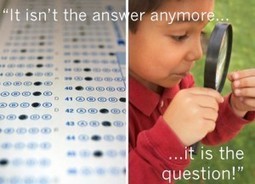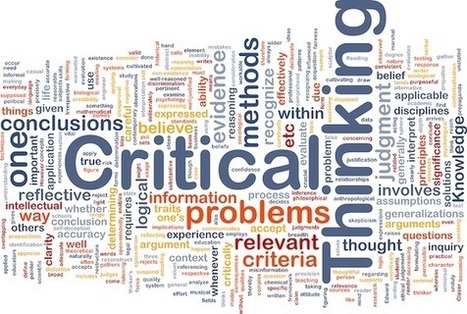"Using the right questions creates powerful, sometimes multiple answers and discussions. Aristotle said that he asked questions in response to other people’s views, while Socrates focused on disciplined questioning to get to the truth of the matter."
Get Started for FREE
Sign up with Facebook Sign up with X
I don't have a Facebook or a X account
 Your new post is loading... Your new post is loading...
 Your new post is loading... Your new post is loading...

Valeria Ríos Bedoya's curator insight,
August 26, 2017 6:33 PM
Teaching to teach critically is a big challenge for us, as teachers, nowadays due to the important impact technology has had in our daily lives; therefore, the topic of this article is very relevant since we need to change the way we teach. We need to adapt our curriculums in order to stop teaching a lot of content that our students can easily find on line, and start teaching how to analyze, interpret and approach appropriately all the information that our students receive through the constant use of technological devices.
|
Christine Bushong's curator insight,
November 11, 2013 10:27 AM
Beth Dichter's insight:
This infographic looks at eight instructional practices that will help students meet Common Core standards and provides a look at how to do this in elementary, middle and high school settings. Check it out and see the recommendations for the following areas: * Make sense of problems and persevere in solving them * Reason abstractly and quantitatively * Construct viable arguments and critique the reasoning of others * Model with mathematics * Use appropriate tools strategically * Attend to precision * Look for and make use of structure * Look for and express regularity in repeated reasoning For more detailed information click through to the infographic. |












Learning to ask good questions is a topic that is often discussed today..but how do we teach students to ask questions, questions that will help them use their higher order thinking skills. This post provides questions you may use with your students to help challenge their thinking. It is split into categories, but many of the questions could be across curriculum areas. The categories listed are:
* Logical questions that focus on mathematics and are split into two categories: collaborative questions for the class and self-reliance questions for individual students.
* Reasoning questions
* Analysis questions
* Connections questions
* Literary questions
* Science and social studies questions.
Below are three of the fifty questions. Click through to the post to find which may work with your students.
* An analysis question - What patterns might lead you to an alternative answer?
* A science and social studies question - What are some of the complexities we should consider?
* A reasoning question - Why do you think this works? Does it always, why?